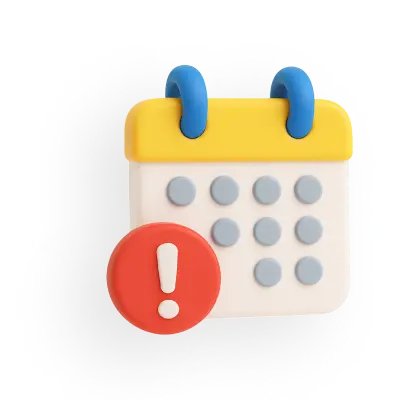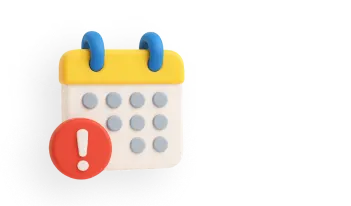Difference Between Credit Card and Debit Card
Knowing the difference between credit and debit cards is crucial for effective financial management. Debit cards allow you to spend only what you have in your bank accounts. Credit cards allow you to borrow funds against a credit limit with additional discounts, rewards and benefits. In this blog, you will learn in detail about the advantages, disadvantages and differences between debit and credit card.
What is a Credit Card?
Credit cards work in a buy-now-pay-later system. Financial institutions and banks issue these financial tools, which let you borrow funds for purchases. Every credit card has a credit limit based on your credit score, which determines how much you can spend.
When you purchase something with your credit card, the issuing bank pays the amount to the merchant on your behalf. If you pay back the amount within a specified time (billing cycle), the bank does not charge you any additional fees. Most banks allow 20 to 50 day interest-free periods to clear your dues.
If you do not pay the amount before the due date, you have to pay a penalty amount and interest to repay the amount. You can also make payments through EMIs if you cannot pay simultaneously. You also need to pay a high interest, which varies among different banks. Credit card issuers usually offer other discounts, offers, and reward points to make credit cards rewarding.
Advantages of Using a Credit Card
Before knowing the difference between a credit card and a debit card, let us check the benefits of using a credit card in your daily life:
- Convenience: Credit cards are convenient and straightforward for online and offline transactions. You do not need to carry cash if you have a credit card.
- Discounts, Cashbacks & Rewards: With credit cards from top banks like Axis, HDFC, SBI, ICICI, etc., you can save a significant amount through flat discounts or cashback offers.
- Interest-Free Period: You can enjoy a grace period of up to 50 days to repay your balance without any interest.
- Building Credit History: Responsible credit card use can improve your credit score, which is important for future loan approvals and better interest rates.
- Emergency Funds: Credit cards can provide immediate access to funds and work as a safety net during financial emergencies.
Disadvantages of Using a Credit Card
With some advantages, there are also some disadvantages to using a credit card:
- High-Interest Rates: Credit cards often carry high interest rates and can lead to significant debt if you do not pay the due balance in full each month. The rate can go up to 36% annually, which is very high.
- Overspending: The ease of access to funds can encourage you to overspend, and you may exceed your budget and incur debt in monthly instalments.
- Fees: Most credit cards have different fees, such as issuance fees, annual fees, late payment fees, fuel surcharges, cash advance fees, etc., which increase overall costs.
- Credit Score Impact: If you mismanage your credit cards regarding late payments or high utilisation ratio, your credit score can be negatively impacted. In future, it will be harder for you to get loans.
What is a Debit Card?
A debit card is a payment card issued by banks that allows you to access funds directly from your bank accounts for purchases and cash withdrawals. Unlike credit cards, debit cards require that you have sufficient funds in your account at the time of the transaction.
When a debit card is used, the money is immediately deducted from your linked account, which is a straightforward way to manage spending without debt. You can use your debit cards for various transactions, such as in-store purchases, online shopping, and ATM withdrawals. To get a debit card, you must have a savings or current account within the bank.
Advantages of Using a Debit Card
Before going forward with the difference between credit card and debit card, check the advantages of using a debit card in your day-to-day transactions:
- Convenience: Debit cards provide easy access to funds linked directly to your bank account. They allow quick payments in-store and online without the need to carry cash.
- Budget Control: Since debit cards only allow spending what is available in your account, they help prevent overspending and debt accumulation.
- Security: Debit cards, equipped with PIN protection and often embedded microchips, offer enhanced security against fraud. You receive notifications for transactions, which adds an extra layer of safety.
- Cash Access: You can use debit cards at ATMs for cash withdrawals and point-of-sale (POS) transactions, providing flexibility in accessing funds when needed. These cash withdrawals incur immediate interest charges without any interest-free period and also attract cash advance fees.
- Easy to Obtain: Getting a debit card is very easy compared to a credit card. You just need a bank account, and you can choose from a wide range of debit cards from your bank. This is one of the important factors in the difference between credit cards and debit cards.
Disadvantages of Using a Debit Card
There are also some disadvantages to using a debit card. Read the following section to know more:
- Limited Fraud Protection: If unauthorised transactions happen through your debit cards, the funds will be deducted immediately from your bank account. After reporting a fraudulent transaction, your bank will investigate and refund the amount later. However, this process can be lengthy and leave you without access to your money.
- No Credit Building: Debit cards do not contribute to credit history building as they have no link with borrowing. This is important when comparing credit and debit cards.
- Spending Limitations: Debit cards come with predetermined spending limits based on your bank balance, which can restrict large purchases or emergency expenses.
- Potential Fees: While most debit cards typically do not have any issuance or annual fees, some banks might charge these fees. On the other hand, if you make too many ATM withdrawals, additional costs will be added.
- Less Reward Potential: Unlike credit cards, debit cards generally do not provide benefits such as discounts, reward points, or cashback.
Credit Card vs Debit Card
To know what is the difference between a credit card and a debit card, follow this table:
Particulars | Credit Card | Debit Card |
Source of Funds | Borrowed from the card issuer | Directly from your bank account |
Spending Limit | Up to a pre-approved credit limit | Limited to the available balance in your account |
Payment Responsibility | You repay the card issuer after purchases | Payment is immediate from your account |
Billing Statements | Monthly statements detailing all transactions | You can see the transactions in your account passbook instantly |
Fees | Credit cards include annual fees, late payment fees, and interest charges | Debit cards include annual fees, ATM transaction fees, etc. |
Interest Rates | You have to pay interest on unpaid balances | No interest charges are applicable |
Rewards and Benefits | Often includes rewards points, cashback, and discounts | Limited rewards than credit cards |
Impact on Credit Score | Affects your credit score based on usage and payments | No impact on credit score |
Application Process | Credit cards require application and approval based on your creditworthiness | You can easily get a debit card if you have a savings or current bank account |
Credit cards are a good banking product if you use them without overspending. If you do not have credit cards, you can try to build a credit score with secured credit cards. Debit cards are also helpful, especially if you need cash. In contrast, credit cards have very high interest rates on cash withdrawals. Hence, create your budget and use both credit and debit cards wisely.
Related Articles:
1. Types of Credit Cards in India
2. Getting A Credit Card For Your Business
3. How Credit Card Impacts Your Credit Score?
4. How to Insert an ATM Card into an ATM Machine?
5. How to Activate an ATM or Debit Card?
6. ATM Withdrawal Limit
Frequently Asked Questions



